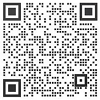
get in touch with us


In contrast to earlier models, the buoyancy shell of the NAMMU is designed to simultaneously protect the sensitive sensor system from shocks and accidental impacts during transportation, deployment and recovery. The sensor is located directly at the bottom of the pressure tube and has direct contact with the anchor, which is crucial for good coupling. The anchor itself, like the OBS, is asymmetrical in weight distribution so when the two come together, the complete system has no tilt during descent and lands on the seabed perfectly level.
During recovery, when the anchor is released, the OBS ascends and resurfaces vertically with a flashing beacon and orange flag sticking high up out of the water for clear visibility and speedy recovery. All parts exposed to seawater are made of either polyethylene or titanium; the result is a highly robust, fully saltwater-proof instrument that is perfect for long-term use.
The data logger is continuously enhanced for precision, robustness and low energy consumption. With a signal-to-noise ratio on four channels of over 142 decibel and with only 125mW energy consumption, this is a high-performance piece of kit. Equally impressive is a 120 Sec broadband seismometer, which works completely autonomously and with a precisely tuned dynamic range. The unit’s total energy consumption is less than a third of a watt and thus, despite its small size, data can be recorded continuously for up to 13 months and with a battery backpack extension for up to 36 months.
The memory drive unit is simply plugged in from the outside and the complete instrument is operated via Wi-Fi and the browser. It is all part of what makes NAMMU as user-friendly as the TV in your living room.
| Product Details | |
|
In 1999, K.U.M. was part of a scientific expedition that provided the team with first-hand experience of the operation of an OBS, one that was considered to be state-of-the-art at that time. That experience highlighted a number of areas where the team felt improvements could be made. Most notably, they felt the releaser was too big and too heavy, the materials that were used were easily corroded, the quality of the data gathered was poor, and the user interface was completely out of date. With all this in mind, the K.U.M. team decided to address the challenges of building a better system.
In 2001, work began on K.U.M.’s own acoustic releaser designed to eliminate the disadvantages of other models on the market at that time. And, in 2003, K.U.M. launched its first titanium releaser, KUMQuat, which is still considered best in class today.
In the following years, based on interest from several universities, K.U.M. constructed a broadband OBS, which would later be called LOBSTER. This represented the team’s first attempt to design a complete OBS system. However, as sophisticated as the LOBSTER was, it was not perfect. So, in 2013, K.U.M. began to develop an OBS that would deliver the team’s radical new vision: an OBS that would offer both the highest performance and lowest energy consumption, yet simultaneously be small and safe enough to use on the deck of a vessel in open seas.
The design of this new OBS was so promising that the development work was supported by the German state of Schleswig-Holstein and by the European Union. After two and a half years of development work, K.U.M. proudly presented a new deep sea OBS concept called NAMMU; this was truly a state-of-the-art instrument that received significant market attention from the moment it was launched. Since then, NAMMU has proven itself on dozens of missions, with its data quality, reliability and user-friendliness resulting in widespread enthusiasm for the concept.
“an elegant design throughout”
|
|
 |
 |
|
THE DEPLOYMENT Up to 50 units can be transported in one 20-foot shipping container. Easy and intuitive programming is offered over a web interface via Wi-Fi – accessible from your laptop or smartphone. No special software is required. Usually a free-falling system, it can also be deployed by ROV.
THE EXPERIMENT Deployments of up to three years are possible due to low power consumption with reliable storage of vital instrument data and metadata. Good coupling is facilitated through a compact instrument design and an aquadynamic shape enables industry-leading low levels of external noise.
THE RETRIEVAL Extremely reliable acoustic release is key for retrieval. Other features include quick location of the instrument with radio beacon and flasher, as well as fast data download via external memory StiK. Easy, fast data conversion to mSEED is possible via our portable open-source software. |
|
 |
 |
|
|

Address:Room 301, Building G4, No. 115, Shangyi Road, Minhang District, Shanghai
Tel:+86 021-64050257
Email:mail@seawardtech.com.cn
